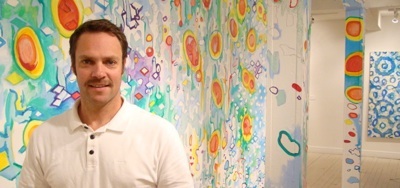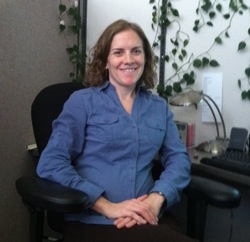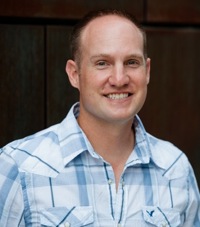The 52,850 people who commute into Boulder every day could fill the equivalent of almost five Coors Events Centers.
Reference to these commuters is often made in Boulder’s discussions about such issues as housing, transportation, jobs, parking, traffic and sprawl. We refer to them in mass as if their wills might easily bend all at once to our well-intentioned wishes. I wanted to associate faces and real life situations to this number and drill down into some personal stories about why they live where they live.
Here are four stories.
The Artist
The useful life of artist Priscilla Cohan’s car came to an end. Without the financial means to buy a new one, she decided to go car-less. That was almost two years ago. Her decision would be unusual if she lived in Boulder, but it is even rarer than that — she lives in Lyons.
Her job downtown at the Boulder Art’s and Crafts Gallery makes her eligible for an EcoPass, but her comfort level in giving up her car mainly came as a result of the Lyons Community Bus Program. According to Boulder County Alternative Transportation Coordinator, Scott McCarey, Nederland has also received funding for a community wide bus pass that will likely start that in January, 2012, assuming RTD gets on board. The county is also working with the City of Longmont on a similar program.
She doesn’t see the half hour commute into Boulder on the Y bus as cramping her style, rather she cherishes it as it offers her downtime she wouldn’t otherwise afford herself. She uses it to read the New Yorker, the subscription paid for with money saved by not owning a car. She’s also purchased a B-Cycle membership which, along with her personal bike, supplement her transportation options while in Boulder. Her entertainment opportunities are enhanced by the generosity of friends who lend her a car now and then and allow her to spend the occasional night in Boulder.
Years ago while working at the Boulder Public Library, her decision not to buy a house in Boulder was based on her desire to live in a more rural mountain setting. Lyons appealed to her for two main reasons. First, it had more of a community “feel” than Boulder. It was a good balance between the quiet of a rural town, yet compact enough to allow easy access to neighbors. Second, while she considered Nederland, the commute up and down Boulder Canyon did not appeal to her.
“I never tire of the drive between Lyons and Boulder, it’s so beautiful!” she remarked during our interview. Aesthetics trumped the cost of a commute, indeed, cost didn’t even enter into her decision.
She lives in the small apartment over the garage in the rear of her little house in Lyons, which she rents to a young couple. The improvements that Lyons has recently made to its downtown have made the community more cohesive. She volunteers and participates in many community projects in Lyons such as The Clarifier Project, writing grant proposals for the Lyons Historical Society and Confluence Community Arts.
“I would love it if my life were more Lyons centered,” she says, “but there aren’t any jobs there. So I have to go to where the jobs are.”
The Non-Profit Executive
David Dadone’s partner thinks he should hire a professional scheduler. As the Executive Director of the Boulder Museum of Contemporary Art (BMOCA), he attends many meetings that can be held anywhere in the metro area and some require a suit and tie.
He also enjoys hiking and yoga classes in Boulder. Consequently, his car doubles as a locker with changes of clothes always available to respond to unanticipated events and spontaneous activities.
He tries to take the bus twice a week into Boulder from his home in the Highlands Neighborhood of Denver, but it’s often difficult because of time and location constraints of his many meetings. When he does take the bus, he finds it relaxing. “It’s time I can use to catch up on emails, work or sleep.” Museum employees all have EcoPasses and access to an eGo CarShare membership.
A native of Argentina, David grew up in Buenos Aires. Well, not actually IN the city but in one of its many suburbs, and ended up in Denver by way of a relationship. While working on his bachelor’s degree in Buenos Aires, he commuted for one and a quarter hours on the subway followed by a walk of ten blocks. “This is not an uncommon routine in big cities,” he says. That’s part of the reason that he doesn’t flinch at his forty minute driving commute into Boulder.
“Boulder is simply part of a metro area that extends from Castle Rock up to Boulder.” he says, “So, when considering where to live we considered the whole metro area.” As they narrowed it down they felt that “Lafayette and Louisville didn’t offer the kind of amenities that the Highlands Neighborhood has and, for five more minutes of commute time, we could live in a more vibrant setting.” His partner, a Denver native who commutes to the Denver Tech Center, selected the neighborhood, and though David would have liked to live in Boulder, splitting the commute was a higher priority.
The little craftsman style house he and his partner own is divided into two dwellings, affording them some revenue from leasing out the second unit. David tends a garden there and another one in one of Denver’s Urban Gardens community gardens. “I feel very fortunate to own a house, though higher density buildings instead of individual houses would provide more affordable housing.”
According to a January 2011 City of Boulder memo, Land Use Tools and Affordable Housing, higher density results in increased affordability only when coupled with Inclusionary Housing benefits in the form of permanently affordable units or cash-in-lieu.
Does the commute cramp his style? “No, we go out for entertainment wherever there is entertainment, if it is in Morrison, we go to Morrison. We come into Boulder, too, especially since the coffee here is better!”
The Analyst
Lori Krager and her husband had tired of living in apartments. They wanted a house with a yard so they could have a dog. Four years ago, at the age of 30, she and her husband set out to find one. At the time, she worked for Boulder County in the GIS department (still does) and her husband was working in Lakewood. They wanted a place located somewhere in between, so they chose Westminster. Boulder was never in the running as a place to live. They wanted a single family house and just assumed they would be priced out.
According to AAA, it costs about $54.10 for every 100 miles driven. I asked Chris Ketterhagen, a Boulder realtor, how much more you could afford on a mortgage by giving up one car. According to him, a widely accepted number for miles driven per year is 12,000 which translates to $541/month in vehicle expense. At 5.5% interest, a full point above today’s rates, over 30 years, $541/month maintains principal and interest on $95,000. With a 10% down-payment, that $541 would maintain an additional $85,000 in mortgage.
Her husband now works in Boulder and, though Lori takes the bus to work most of the time, he drives every day. They don’t carpool because of their different schedules. Lori estimates that the bus commute costs her one hour each way, factoring in the drive to the park-n-ride, parking, walking over the highway and waiting time. However, she really likes the down time that riding the bus affords, “I’ve never read so many books or listened to so much music,” she exclaimed, “on days I drive, I miss my down time.”
“Most of our social life happens in Boulder after work. This as an advantage because it keeps us off of the turnpike during rush hour,” she explained in response to my question about whether or not her commute time allowed for activities outside of work and family.
A few times during the summer she will venture to work on her bike even though it is logistically challenging. The eighteen mile ride requires a change of clothes, brought to work and prepared a day ahead, and a shower afterward. She has a membership at the downtown gym that affords her a comfortable shower and changing space.
Does the commute cramp her style? “No, not really, we’ve been doing it so long we don’t think about it.”
The Designer
Colorado native Mac Bernhardt and his brother bought a house together six years ago. “We chose Broomfield because it is between Denver and Boulder.” says Mac, “Jobs in our field are either going to be in Boulder or in Denver, so a house in between made sense.” Mac is a designer for 505Design in Boulder. As an artistic and tech oriented professional, he sees himself as an undeniable member of the “Creative Class.”
In his book The Rise of the Creative Class, Richard Florida defines the Creative Class as consisting of two components “the super creative core” and the “creative professionals.” The former includes scientists, engineers, academics, artists, novelists and entertainers as well as the society’s thought leadership: non-fiction writers, editors, cultural figures, analysts and opinion-makers. The latter works in “knowledge-intensive” industries such as high-tech, finance, law, medicine and business. According to Florida, the Creative Class adds economic value through their creativity.
After graduating from the University of Colorado-Boulder with a degree in Environmental design, he attended graduate school at the University of Colorado-Denver, after which he got a job in Denver, worked there for a year then moved to a job in Boulder. He’s changed jobs four times in ten years. So when he and his brother, a high school baseball coach and teacher, bought their house, it was based on the idea that frequent job changes are a part life and that since most jobs in his industry are either in Boulder or in Denver, a community halfway in between would make a manageable commute in either direction.
His is one of the many single occupancy vehicles heading west on the turnpike every morning. “The bus is not really an option,” he asserts, “my home is not convenient to a transit stop and it would take an hour to drive to a park-n-ride, take the bus and get to the office (just north of Downtown Boulder).” The dollar value of his time trumps the dollar cost of an average thirty minute driving commute.
His extra-curricular activities revolve around softball teams and games that are usually after work in Boulder. The Orchard Town Center, a quick drive from his home, offers many amenities such as restaurants and movie theaters. He doesn’t feel that the commute cramps his lifestyle. Would he like to live close to work? “It would be nice to live close to work, but with the turnover of jobs in the design industry and the struggling economy, it’s hard to predict where my career will take me.”
His brother married and moved out of their house three years ago and the house that he currently shares with roommates will soon become a perfect place for the next stage of his life, Mac is getting married next spring.
Conclusions
These four profiles begin to reveal the intricate nature behind individuals’ housing decisions. By acknowledging the myriad of complexities that rule people’s lives, perhaps our conversation about how to deal with the in-commuter problem can shift from one of numbers to one of understanding the fuel behind these complexities.
Solutions to quell in-commuting such as building more affordable condominiums inside Boulder City limits might help but are over simplified and not a panacea. We need to acknowledge and address the two-worker household phenomenon and the transient nature of modern jobs.
Innovations like exploring allowing workers to clock-in on the bus and city-wide EcoPasses coupled with an educational campaign about the true costs of commuting could encourage more use of public transit. Boulder County recently installed giant locked bike cages as an option to putting a bike on the bus to help with the “last mile” connection. On the private sector side there are technologies already in existence to help make ride sharing easier, while making offering rides a source of revenue. Policy changes that would allow additional housing solutions such as carriage houses and basement apartments that can also boost household revenues would put owning a single family house more within reach of middle class incomes.
Near the end of The Rise of the Creative Class, Richard Florida lists three types of high-tech communities: nerdistans (like Silicon Valley), latte towns (like Boulder) and old urban centers (like New York’s SoHo). Leading Creative Centers, he says, provide all three options. In fact, he points to the Denver region that combines the assets of Boulder and the urban character of the LoDo district to create its “nerdistan.” His view is that Denver is a region that includes Boulder and communities in between and beyond.
The four people profiled here can all be considered part of Florida’s Creative Class and, like Florida, understand that Boulder is part of a region. In striving to solve the in-commuting problem, we should, too.
Thanks to Priscilla, David, Lori and Mac for their generosity in granting me an interview. I’d also like to thank Scott McCarey for helping me develop a set of relevant questions and Chris Ketterhagen for running the numbers. References are linked to directly.







 (8 votes, average: 4.38 out of 5)
(8 votes, average: 4.38 out of 5)